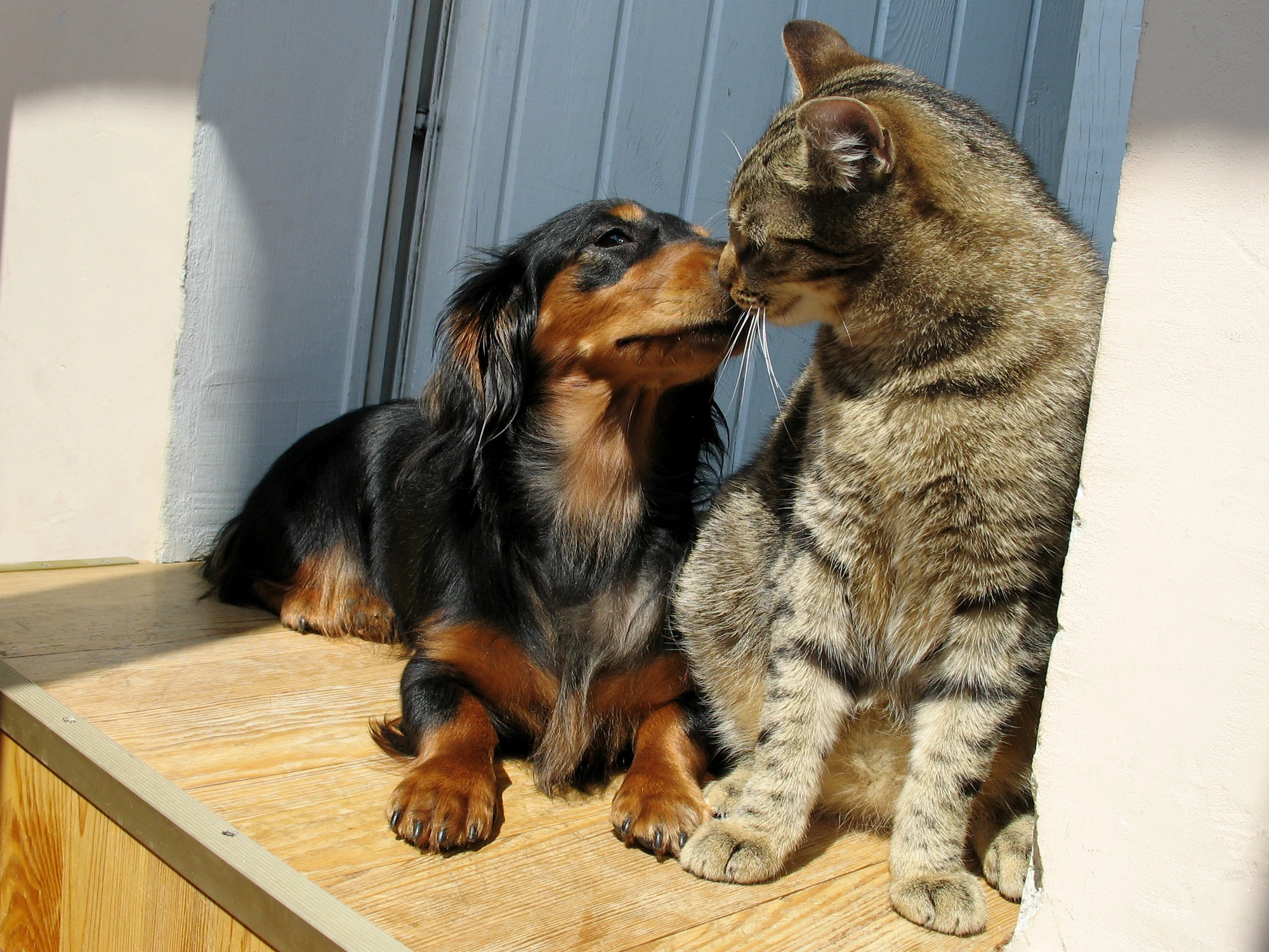Cats and dogs can sometimes make a great pairing, but much of the time they go together like oil and water. A new study has explored how pheromones could lead to more harmonious relationships between these common pets, and found that a couple of currently available examples can have a calming effect for pairs living under in the same household.
The research was carried out by animal behavioral scientists at the University of Lincoln, and focused on two particular types of pheromones. In their natural form, pheromones are chemical communication substances that animals release into the environment, but there are synthetic versions on the market designed to help pets feel more at home in the house, and to encourage bonding with other pets of the same species.
The University of Lincoln team set out to explore how these types of products could be used to promote healthy relationships across inter-species boundaries. The scientists had groups of pet owners use either cat pheromone Feliway Friends or dog pheromone Adaptil across a six-week period, to see if they could be used to create happier homes.
"Although we are all aware of the perceived tensions between cats and dogs, we believe this is the first study of its kind to explore the use of pheromone products to improve the relationship when the two species are living in the same household," explains Professor Mills, Professor of Veterinary Behavioural Medicine in Lincoln's School of Life Sciences.
The team had the pet owners track the frequency of 10 undesirable actions between their cats and dogs, which revealed a “notable decrease” in types of mischievous encounters that include dogs chasing cats, cats hiding from dogs and dogs barking at cats.
Interestingly, this also revealed that Adaptil increased the frequency of positive interactions between the pets, such as friendly greetings and peacefully spending time in the same room. This is the opposite of what the researchers expected to find, because the comfort of cats is considered to be a more significant factor in the overall harmony of a multi-pet household.
"While it might be expected that Feliway Friends would be more effective in multi-species homes given the apparently stronger contribution of the cat's comfortability to the quality of the cat-dog relationship, this did not appear to be the case,” says study author Dr Miriam Prior. “Our results might be explained by the behavior of the dog being the primary determinant of the cat's quality of interaction with it.”
The team hopes to continue studying the influence of these pheromones and how they produce these effects, including the possibility of using them in tandem as a one-two punch.
"We would like to investigate this further to really tease out the effects of these pheromone products individually and also to investigate their use in combination with each other," says Prior. "We suggest that Adaptil may have had such a beneficial effect because a more relaxed dog may be less likely to disturb the cat (e.g. by chasing it), resulting in a cat that is less stressed and more willing to form some form of social bond with the dog."
It should be noted that the makers of the pheromone products, Ceva Animal Health, provided them to the study free of charge and offered to pay to make the paper open access, but the researchers declare that their work "was conducted in the absence of any commercial or financial relationships that could be construed as a potential conflict of interest."
The research was published in the journal Frontiers in Veterinary Science.
Source: University of Lincoln




